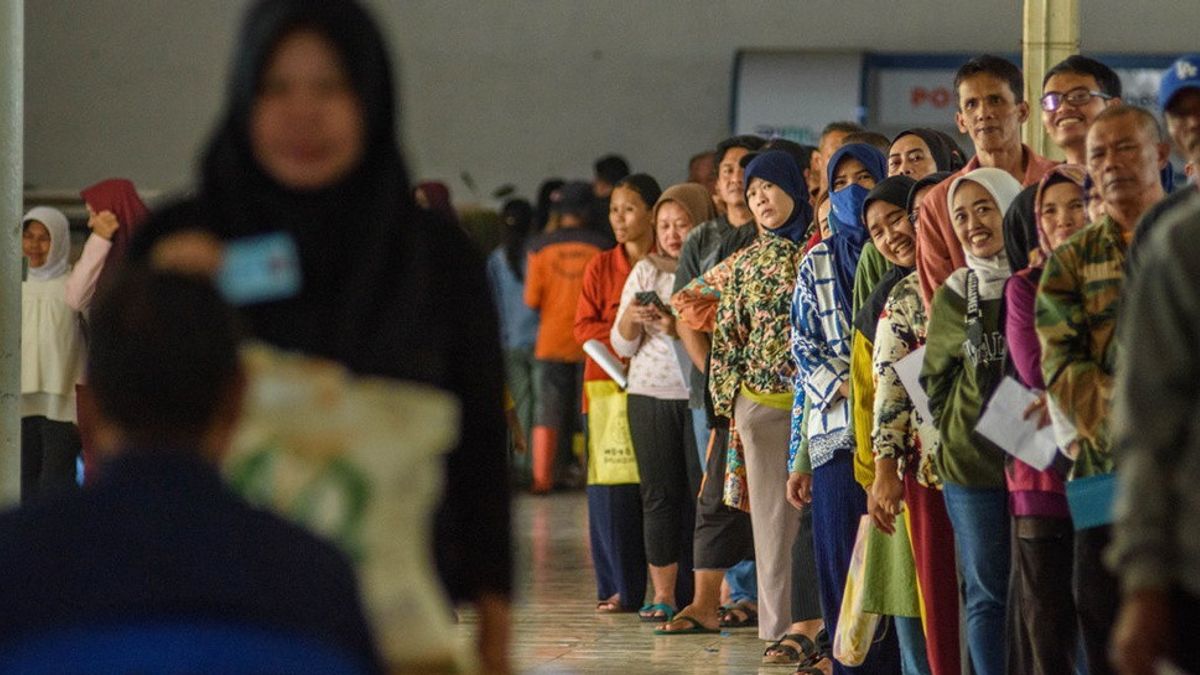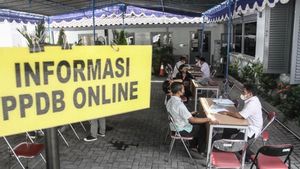JAKARTA The Central Statistics Agency (BPS) released a decent living standard in Indonesia in 2024 to Rp1.02 million per capita per month. This figure, according to a number of standard living economists issued by BPS, is very random and paradoxical.
The figure of Rp. 12.34 million per year or equivalent to Rp. 1.02 million per month referred to by BPS as a standard of decent living in Indonesia this year has drawn controversy. For some people, this figure is far from a proper living figure. The figure is even lower than the lowest Regional Minimum Wage (UMR), which is in Banjarnegara Regency amounting to Rp2,038,005.
Center of Economic and Law Studies (CELIOS) researcher Achmad Hanif Imaduddin said the decent living position of BPS is very ambiguous and paradoxical.
"This consumption can be low because people do not have the ability to buy more expensive goods, have limited income, and are more careful in using their money," explained Achmad.
BPS calculates the standard of living properly using real per capita expenditures that are tailored to purchasing power parity or purchasing parity. This calculation is different from the one used by the United Nations Development Program (UNDP), which uses customized Gross National Product (PNB).
BPS noted that this year's standard living value increased by IDR 442 thousand or 3.71 percent compared to 2023 which amounted to IDR 11.89 million per year.
"This is higher than the average growth in 2020-2023 of 2.61 percent," said the statement quoted from the Acting Head of BPS Amalia Adininggar Widyasanti in a press conference.
According to BPS, the standard of decent living will continue to increase in the 2020-2024 period. In 2020, the standard of decent living is IDR 11.01 million per year, then it will increase to IDR 11.15 million in 2021. In 2022, this figure will again increase to IDR 11.47 million and IDR 11.89 in 2023. Thus, the standard increase in decent living standards in 2024 is the highest in the last five years.
In the same report, it shows that Jakarta is the area with the highest real expenditure per capita in 2024, which is Rp. 19.95 million per year or around Rp. 1.66 million per month. While the lowest position is the Papua Mountains whose expenditure is Rp. 5.7 per year or Rp. 475 thousand per month.
The standard of decent living is one of the three components of the growth of the Human Development Index (HDI) in addition to life expectancy at birth and knowledge. Based on BPS records, Indonesia's HDI this year is at the level of 75.02, up 0.63 points or 0.85 percent compared to 2023 which amounted to 74.39.
However, the decent living standards issued by BPS caused debate among many circles. Rp1 million is considered far from reflecting the real cost of living, especially in big cities. With that much money, it means that people's purchasing power is very vulnerable and many depend on social assistance to survive.
SEE ALSO:
For example, the rental fee for plots on the outskirts of big cities is at least Rp. 500 thousand per month, not including electricity and water costs. That means half of the standard of living is worth running out just for a place to live.
The remaining Rp500 thousand is almost certainly not sufficient for a month's food needs. The needs of transportation, health, and other unexpected needs have not been calculated.
The use of real expenditure indicators in calculating living standards deserves to be highlighted by a number of observers. Economists from the Center of Economic and Law Studies (CELIOS) Nailul Huda, explained that real public spending is an expenditure that can be achieved, regardless of whether real expenditure is feasible or not. While the standard of decent living is the ideal expenditure standard. But in fact, the calculation of expenses in the standard of living is feasible far below the real spending of the community.
According to Huda, this ideal or proper standard of living should be calculated by several components of its formation, including the ideal need for education to help students absorb knowledge properly, the need for good access to health, to food needs that suit minimal nutritional needs.
"So the decent living standards issued by BPS are not in accordance with the real conditions of the community," Huda told VOI.
In addition, according to him, real expenditure should also be calculated by including elements of price increases or inflation. With inflation predictions of 2.5 percent, he projects that the increase in public spending is only around 1.21 percent.
Referring to this calculation, Huda believes that the increase in real public spending is very low. Especially to be able to save or shop for better needs.
"Indonesian people's income has only increased by 1.8 percent, it is still far from feasible," he said.
Meanwhile, CelIOS researcher Achmad Hanif Imaduddin criticized BPS' calculation and standard of living. The decent living standards calculated from household consumption costs are actually considered random and paradoxical.
"In fact, this consumption could be low because people do not have the ability to buy more expensive goods, have limited income, and are more careful in using their money," he explained.
With this figure, it is very likely that they do not live in a decent condition, but live in limitations. If it is called feasible, the question is which area in Indonesia whose people live prosperous only with a capital of IDR 1 million per month.
Living a decent life means living in an adequate home, eating nutritious food, and wearing proper clothes.
The English, Chinese, Japanese, Arabic, and French versions are automatically generated by the AI. So there may still be inaccuracies in translating, please always see Indonesian as our main language. (system supported by DigitalSiber.id)















